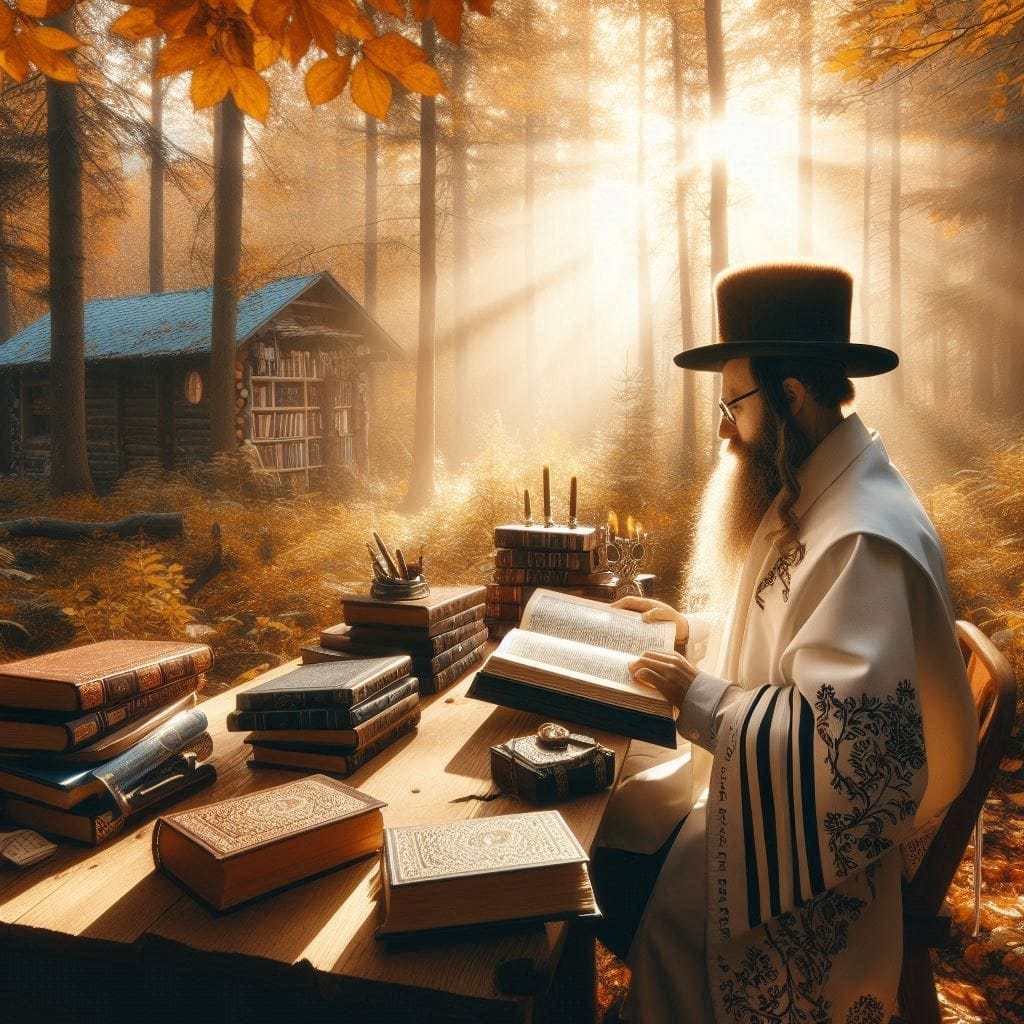
Yom Kippur Like Purim: Fasting, Joy, and the Hidden Face of God Part 4
B"H
The Unified Vision: Yom Kippur, Purim, and the Joy of the Hidden Face
1. The Two Masks of Holiness
If we step back, we can see that Yom Kippur and Purim both wear masks. On Yom Kippur, the mask is solemn: fasting, white garments, bowing, silence. On Purim, the mask is playful: costumes, wine, laughter, noise. Yet both conceal the same face — the joy of being near Hashem.
This is why the sages say Yom Kippur is “like Purim.” One might expect the Day of Atonement to stand above all, yet the Zohar hints that Purim is even greater, for it reveals God not in the temple but in the palace, not in fasting but in feasting.
Yeshua’s words about fasting capture this truth. A gloomy face is a false mask; a washed and anointed face is the true mask, one that hides the fast from human eyes and reveals it only to God. Just as Purim’s mask hides God in exile, so Yom Kippur’s mask hides joy in affliction. Both remind us that God is found in secret, not in outward show.

2. Washing and Anointing: A Shared Symbol
The imagery of “washing the face” and “anointing the head” links Yom Kippur and Purim in a striking way.
On Yom Kippur, washing is restricted — but permitted when needed for dignity or mitzvah. The message: affliction is not humiliation; the day is holy, not filthy.
On Purim, anointing with joy and celebration is central. We drink, we feast, we gladden the body.
In Matthew 6, Yeshua fuses the two: “When you fast, anoint your head and wash your face.” Fasting should carry Purim’s spirit of joy even within Yom Kippur’s solemnity.
Thus, halacha and teaching converge: the fast is not misery but hidden joy, clothed in dignity, masked in secrecy, shared only with God.

3. Judgment and Reversal
The themes of Yom Kippur and Purim both hinge on judgment reversed.
On Yom Kippur, Hashem annuls the decree of sin. The lots of the goats decide fate, but teshuvah overturns it.
On Purim, Hashem annuls Haman’s decree. The lots of the pur decide Israel’s destruction, but divine providence overturns it.
In both, God reveals Himself as the One who turns fate upside down.
And what is the key to this reversal? On Yom Kippur, it is teshuvah — the heart’s return, clothed in joy. On Purim, it is simchah — joy and unity, clothed in feasting. Both are the same: joy before God.

4. The Hidden Father
Yeshua’s repeated refrain in Matthew 6 is: “Your Father, who sees in secret.” Prayer, charity, fasting — all must be hidden, for God sees the heart.
This teaching echoes the essence of Purim: Hashem is hidden, yet present in every turn of the story.
In halachic terms, this also echoes the laws of Yom Kippur. The afflictions are visible, but the true teshuvah is hidden. Tears are private. The Kohen Gadol enters alone into the Holy of Holies. The encounter is not public display but intimate meeting.
Thus, Yom Kippur and Purim both teach the same truth: Hashem’s face may be hidden, but His gaze is constant. He sees in secret, and He rejoices in the heart that returns with joy.

5. The Joy of Forgiveness, the Joy of Salvation
The Talmud calls Yom Kippur one of the happiest days of the year because it is the day of forgiveness. The Megillah calls Purim a day of “light, joy, gladness, and honor” because it is the day of salvation. Forgiveness and salvation are two sides of the same coin.
Forgiveness is salvation from within — the lifting of guilt, the clearing of conscience, the renewal of covenant.
Salvation is forgiveness from without — the lifting of external threat, the deliverance from annihilation.
Yom Kippur heals the soul; Purim heals the body. Yom Kippur lifts us to heaven; Purim brings heaven into earth. Together, they form one circle of joy.

6. A Messianic Hint
Here the gematria adds another layer. The word Mashiach (משיח) equals 358.
Tenfold (×10 for the 10 days of repentance), it becomes 3,580 — the number of words in this teaching.
The hint is profound: the Messiah unites what seems opposite. He shows that fasting and feasting are not enemies but brothers. He reveals that forgiveness and salvation are one. He teaches, like the sages before him, that Yom Kippur is like Purim — both doorways to God, both faces of joy.
The messianic hope, hinted in Purim’s deliverance and Yom Kippur’s atonement, is that Israel will see both revealed as one: a joy that needs no mask, a forgiveness that needs no fasting, a salvation that is eternal.

7. Practical Takeaway: How to Fast with Joy
How then should we live this teaching?
On Yom Kippur, let our faces be washed, our bodies clean, our garments dignified. Let us fast not with gloom but with joy, knowing the day is for reconciliation, not misery.
On Purim, let our feasting be holy, our laughter kind, our generosity abundant. Let us not descend into gluttony but rise into joy, knowing the day is for revealing God in the hidden.
In all fasting and all feasting, let us remember: the Father sees in secret. The measure is not the appearance but the heart.
Thus the halachic and spiritual path converge: whether we afflict ourselves or rejoice, the goal is the same — to draw close to Hashem with sincerity and joy.

Conclusion: The Secret of Joy
Yom Kippur is like Purim. One day strips us of the body to reveal the soul; the other fills the body with joy to reveal the soul.
Both annul decrees, both overturn fate, both show that Hashem is hidden yet present.
The halachot of fasting and washing teach us not to mistake misery for holiness. Cleanliness, dignity, and joy are not forbidden but required. Yeshua’s words — “wash your face, anoint your head” — echo Rambam, Shulchan Aruch, and Isaiah alike: fasting is not for show, but for joy before God.
The Talmud calls Yom Kippur one of the happiest days; the Megillah calls Purim a day of joy and light. Together they proclaim: holiness is joy, whether in silence or in laughter. The hidden God is present in both the Temple and the palace, in fasting and feasting, in affliction and in wine.
The messianic hope is that one day, all masks will fall away, and the joy of Yom Kippur and Purim will unite into one eternal feast — the joy of Hashem with His people. Until then, we live the mystery: when you fast, wash your face; when you feast, gladden your heart.
For in both, The Father who sees in secret is near.

Subscribe now.
Sign up for our newsletter to get the most interesting stories of the day straight to your inbox before everyone else
Created with © systeme.io • Privacy policy • Terms of service


